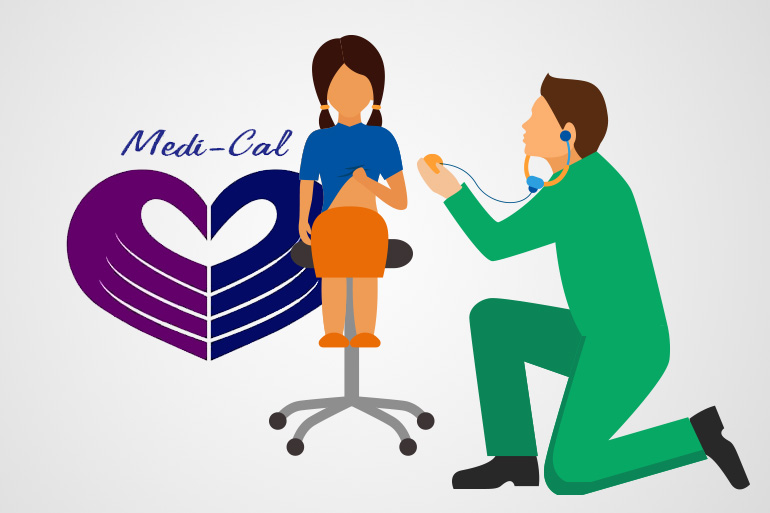In a few months, California will begin providing full Medi-Cal coverage to all low-income children — regardless of their immigration status.
Depending on whom you ask, anywhere from 170,000 to 250,000 children who live in California and are in the country illegally will qualify.
If you think your child will, or know a parent whose child will, state officials and health care advocates have a simple message for you: Take action now. “Sign up today,” says Rachel Vizcarra, a program assistant with the UFW Foundation in Bakersfield, which is helping families pre-enroll. “If you do, your kids will be automatically enrolled into the program.”
State officials expect coverage to start May 16. But because the policy shift requires complex programming changes to state and county computer systems, implementation may be delayed, says Tony Cava of the state Department of Health Care Services.
No matter when it occurs, eligible children will gain coverage retroactive to the first day of that month, he says. For example, if the change takes place on May 16, coverage will extend back to May 1.
Carolina Moran of Canoga Park looks forward to taking her 14-year-old daughter Lizeth to the doctor once she becomes eligible for full Medi-Cal benefits.
A concussion on the soccer field sent Lizeth to the emergency room in January, but she couldn’t see a doctor for a follow-up visit because “we couldn’t afford it. We would have to pay out of pocket,” Moran says.
The first thing Moran will do is take Lizeth for a physical “and make sure her vaccinations are up to date,” she says. “She also needs fillings for five cavities.”
Medi-Cal eligibility is based on household income, and children under the age of 19 qualify at a higher income level than adults. They’re eligible for Medi-Cal if the family’s household income is less than 266 percent of the Federal Poverty Level, or about $53,600 for a family of three and $75,650 for a family of five.
Currently, children and adults in the country illegally qualify for limited Medi-Cal coverage, called restricted-scope, which covers emergency and pregnancy-related services.
Though this may sound counter-intuitive, health care advocates and the state want you to sign your kids up for restricted Medi-Cal now in preparation for the availability of full Medi-Cal benefits.
The idea is that when the change occurs, qualified children will automatically transition into full-scope Medi-Cal “within a few days” and without an additional application, Cava says.
The state estimates that there are about 115,000 unauthorized immigrant children who already have restricted Medi-Cal.
If your child is uninsured, sign up for restricted-scope Medi-Cal now. Even if your child has coverage through another existing program — such as Kaiser Permanente’s Child Health Program or county-based health coverage — you should still sign him/her up for restricted Medi-Cal now, says Mark Diel, CEO of California Coverage & Health Initiatives (CCHI), a statewide outreach and enrollment network.
That’s because those kids will eventually become ineligible for those programs after they become eligible for full Medi-Cal, he says. (Don’t drop out of another program until you confirm that your child’s full-scope Medi-Cal has been approved, he says.)
But be warned: The Medi-Cal application is long and complicated. To complete it, you’ll need to provide a birth certificate, proof of local address, proof of identity and income information, Vizcarra says. Foreign passports and birth certificates can be used.
“Work with a local enroller instead of trying to do it on your own,” Diel says. “You’re much more likely to get the application approved.”
Help from local health clinics and community groups is free. Online, visit www.cchi4families.org/find-help for local resources.
Advocates and state officials also want you to know that enrolling your kids shouldn’t lead to negative immigration consequences for you — or other members of your family — who may not have legal status.
“None of the information being collected is shared with immigration authorities,” says Maria Romero-Mora of CCHI.
Once you get your kids into restricted-scope Medi-Cal, and eventually into full Medi-Cal, you’ll need to take action. Look for letters in the mail before and after the transition explaining your options.
CHOOSE A PLAN: Once the transition to full Medi-Cal occurs, you will have 60 days to choose a managed care health plan for children already enrolled in restricted-scope Medi-Cal. If you don’t choose a plan, the state will assign one, Cava says.
Parents of kids who are not in restricted-scope Medi-Cal at the time of the change and who enroll them afterward will have 30 days to choose a plan, he says.
If you live in one of 22 counties where Medi-Cal managed care is operated by a single County Organized Health System, children will be automatically enrolled in that plan, Cava says.
In all cases, until a plan is chosen — or assigned — children will receive coverage through Medi-Cal’s fee-for-service program.
PAY PREMIUMS: Medi-Cal is premium-free for kids up to 160 percent of the Federal Poverty Level, but you will owe a premium if your family income falls between 160 percent and 266 percent. The premium is $13 a month for each child, with a $39 family maximum.
Children in Medi-Cal plans don’t have co-payments for medical care.
RENEW: You will need to participate in Medi-Cal’s annual renewal process to ensure your children remain eligible and enrolled.
Finally, if you don’t sign your child up for restricted Medi-Cal before the change, you can apply for full benefits afterward — anytime of year — at your county human services office, through a community organization or via theCovered California website, www.CoveredCA.com.
In Canoga Park, Moran says getting Lizeth on Medi-Cal will give her family greater financial security. Lizeth agrees.
“I worry that if I have to go to a checkup, it’s going to cost my parents money, and sometimes they don’t have the money to pay for it,” the ninth-grader says.


